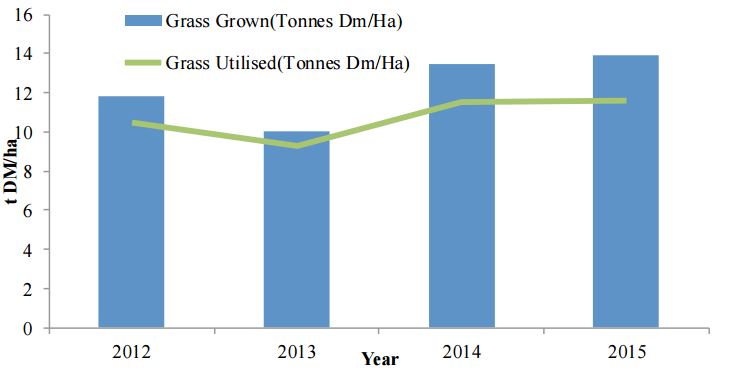Farmers working off high derogation levels should soil test every year, according to the Head of Grassland Science in Teagasc Moorepark, Michael O’Donovan.
“Without annual soil tests and reacting to them you probably would be working in the dark, if you are working of high derogation levels you should be testing your soils every year,” O’Donovan said.
Speaking at the Teagasc Greenfield dairy farm open day, O’Donovan said that the farm has soil tested every year and the management decisions are based around these results.
Without yearly soil fertility testing we probably would have been misguided, we are up at derogation limits in terms of P and there is about 8kg of surplus P on the farm at the moment.
“So, that yearly soil test is very important for the farm here to keep the P levels at a high enough level, at the moment about 66% of the farm is soil index 3 and 4,” he said.
He said the low index paddocks are always being identified to ensure that they get the required levels of fertiliser P.
“Every year since 2012, there has been about 24kg of P being applied, 95% of that is in the chemical form.
O’Donovan continued to say that the Potassium (K) levels on the farm are pretty good.
“When they started here, about 55% of the paddocks were at soil K index of 3 and 4 and at the moment about 77% are at soil index 3 or 4,” he said.
The Teagasc representative also said that soil pH is important for grass growth as a low soil pH can result in a 1.5t loss in grass dry matter production.
And, the current soil pH is 6.1, which he said is a little bit low to activate Phosphorous (P) in the soil, and to address this issue, O’Donovan said 300t of lime will be spread on the farm this year.
Greenfield Grass Growth
The Greenfield dairy farm needs to grow more grass if it plans on increasing its stocking rate any further, O’Donovan said.
The farm would have to increase grass production if the stocking rate went over the current level of 2.7LU/ha.
But, he said at current level the farm has been self-sufficient in grass production both in 2014 and 2015.
The stocking rate here is about 2.74 cows to the hectare, in those two years the farm was self sufficient in the sense that there was no other feed bought in bar concentrate.
He said that the farm focuses on using very little concentrate feed. In 2015, the feed usage per cow was only 180kg.
This is because grass utilisation on the farm is quite high, with 85% of the grass grown on the farm used in the diets for the cows.

